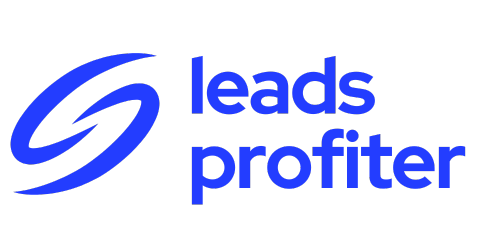In today’s fast-paced market, creating a sense of urgency during sales calls can make all the difference. I’ve seen firsthand how a little urgency can transform a hesitant prospect into a committed buyer. It’s not just about pushing for a sale; it’s about highlighting the value and timeliness of your offer.
Understanding Urgency in Sales Calls
Creating urgency in sales calls fosters a stronger connection between the prospect and the desired outcome. By establishing this urgency, I can effectively motivate prospects to act quickly and decisively.
The Importance of Urgency
Urgency increases conversion rates by encouraging immediate action. It emphasizes the value of an offer and motivates prospects to overcome hesitation. According to research, 60% of consumers prefer offers that create a sense of urgency, making them more likely to respond positively. When prospects perceive scarcity or time sensitivity, they feel compelled to make decisions faster. Highlighting these elements can enhance my sales approach significantly.
Psychological Triggers That Create Urgency
Several psychological triggers can elevate urgency in sales calls:
- Scarcity: Limited availability, such as exclusive offers or a fixed number of items, spurs action by creating fear of missing out. Mentioning a few remaining units of a product often prompts buyers to act quickly.
- Time Limitation: Setting deadlines or creating a limited-time offer fosters urgency. Phrases like “offer ends Friday” create pressure for immediate decision-making.
- Social Proof: Sharing testimonials or case studies from other customers reinforces urgency. When prospects hear about others benefiting from an offer, they may feel driven to engage.
- Fear of Loss: Emphasizing what they might lose by not acting can be effective. I can outline the potential negative consequences of inaction, compelling prospects to reconsider their stance.
- Anticipation: Building excitement around upcoming changes can motivate early commitment. Whether it’s an upcoming price increase or product launch, I can highlight the benefits of acting before these changes take effect.
Leveraging these triggers can enhance my ability to create urgency during sales calls, ultimately leading to increased conversions.
Step 1: Build Rapport Quickly
Building rapport quickly sets a solid foundation for increasing urgency during sales calls. Establishing a connection enhances the prospect’s willingness to engage and consider the offer.
Techniques for Effective Rapport Building
- Use the Prospect’s Name: Engaging with the prospect’s name personalizes the conversation, creating a sense of intimacy.
- Share Relevant Experiences: Sharing relevant experiences demonstrates understanding and can help the prospect relate to my message.
- Listen Actively: Active listening signals respect and interest in the prospect’s needs, encouraging open dialogue.
- Utilize Humor: Appropriate humor can lighten the mood and create a friendly atmosphere, making prospects feel more comfortable.
- Find Common Ground: Identifying shared interests or values enhances connection, aligning my approach with their preferences.
Establishing Trust Early On
- Be Transparent: Openly sharing information about the product and potential limitations fosters credibility.
- Show Empathy: Addressing the prospect’s concerns demonstrates empathy, building trust and rapport.
- Provide Social Proof: Sharing testimonials or case studies establishes credibility and shows proven results.
- Set Realistic Expectations: Clearly communicating what the prospect can expect builds trust and prevents future disappointments.
- Follow Through: Delivering on promises reinforces reliability and strengthens the prospect’s faith in my abilities.
Step 2: Highlight Limited-Time Offers
Highlighting limited-time offers creates a strong sense of urgency and motivates prospects to act quickly. Use these strategies to enhance your sales effectiveness.
Creating Exclusivity
Creating a sense of exclusivity drives urgency. I present limited-time offers to specific groups, making them feel special and valued. For example, I might offer a 20% discount exclusively for first-time customers who sign up within a week. This tactic not only encourages immediate action but also fosters loyalty, as prospects perceive the offer as tailored to them. Additionally, using phrases like “only available for 50 customers” amplifies urgency, prompting prospects to secure their place before the opportunity disappears.
Timing Your Offers for Maximum Impact
Timing plays a crucial role in maximizing the effectiveness of limited-time offers. I align my offers with key events, such as holidays or product launches, to make them more relevant. An urgency-driven approach might include setting a deadline like “offer ends at midnight on Friday.” This clear time constraint instills pressure, making prospects more likely to act swiftly. I also recommend following up on my calls shortly after that deadline to assess interest and address lingering objections, thereby maintaining the momentum built during the initial call.
Step 3: Use Language That Inspires Action
Using action-oriented language encourages prospects to move quickly. Choosing the right words and framing your message effectively can significantly increase urgency during a sales call.
Words and Phrases to Create Urgency
Incorporating specific words and phrases can heighten urgency. Here are key terms to consider:
- “Limited time”: It creates a sense that the opportunity won’t last.
- “Exclusive offer”: By positioning it as unique, prospects feel special and compelled to act.
- “Only a few left”: This implies scarcity, motivating clients to seize the moment.
- “Act now”: This straightforward phrase directs immediate action.
- “Last chance”: It suggests a closing window, pushing prospects to decide swiftly.
Employing these phrases throughout your conversation can motivate prospects to take decisive steps toward a purchase.
Framing Your Message Effectively
Framing your message shapes how prospects perceive urgency. Here are techniques to enhance your communication:
- Highlight benefits: Emphasizing how quick action leads to significant advantages keeps prospects engaged.
- Create a narrative: Paint a picture where a swift decision leads to positive outcomes. For example, outline how early adopters of your service saw substantial returns.
- Present alternatives: Remind prospects of potential negative outcomes if they delay, such as missing out on savings or valuable opportunities.
- Use testimonials: Sharing success stories can reinforce urgency by showing how others benefited from prompt decisions.
By skillfully framing your language and message, I can cultivate a more urgent atmosphere that encourages action during my sales calls.
Step 4: Leverage Social Proof
I can amplify urgency in sales calls by effectively utilizing social proof. This tactic not only builds credibility but also motivates prospects to act quickly by showcasing that others have already found success with the offer.
Sharing Success Stories
Sharing success stories provides tangible proof of the effectiveness of the product or service. I focus on specific case studies where previous clients achieved notable results. For instance, I might discuss a small business that increased revenue by 30% within three months after implementing my solution. These compelling narratives resonate with prospects, making them appreciate the potential benefits and feel a desire to replicate that success. By making success stories relatable, I can create a connection that drives urgency.
Utilizing Testimonials to Build Credibility
Utilizing testimonials serves as a powerful tool for establishing trust. I gather positive feedback from satisfied customers and present it during my sales calls. For example, a statement reinforcing that “95% of our clients recommend us within the first month” can prompt prospects to consider the product seriously and act promptly. I incorporate these testimonials in various formats, such as short video clips or direct quotes, to enhance engagement. By demonstrating widespread approval, I instill confidence and encourage prospects to take immediate action.
Step 5: Follow Up with Purpose
Following up with purpose significantly enhances urgency in sales calls. Timely and strategic follow-ups can turn initial interest into decisive action.
Crafting Effective Follow-Up Messages
Crafting effective follow-up messages helps ensure prospects feel valued. Personalization should be a priority; use the prospect’s name and reference previous conversations. Keep messages concise and action-oriented, clearly outlining the next steps. Incorporate urgency by reiterating the limited nature of your offer. For example, phrases like “Only a few spots left” or “This exclusive deal ends soon” can prompt quicker responses. Include a clear call to action that directs prospects on what to do next, whether it’s to schedule a meeting, visit a website, or respond with questions.
Timing Your Follow-Ups for Best Results
Timing impacts the effectiveness of follow-ups. Aim for follow-ups within 24 hours of your initial conversation to maintain momentum. Evaluate the prospect’s circumstances; if they expressed urgency, contact them sooner rather than later. For instance, sending a message right after an event or meeting reinforces that you value their time and interest. Additionally, incorporate strategic follow-ups that align with deadlines. If the prospect has a deadline of Friday, follow up on Thursday to remind them of the time-sensitive offer. Consistent and timely follow-ups keep the urgency alive, encouraging prospects to act decisively.
Conclusion
Creating urgency in sales calls is a game changer for boosting conversion rates. By implementing the strategies discussed I can not only capture my prospect’s attention but also motivate them to act swiftly. Building rapport and trust lays the groundwork for effective urgency while using psychological triggers makes my offers irresistible.
Incorporating limited-time deals and action-oriented language further enhances the urgency factor. Plus, timely follow-ups keep the momentum going and remind prospects of the value in acting now. By mastering these techniques I’ll be well on my way to transforming hesitant leads into enthusiastic buyers.



